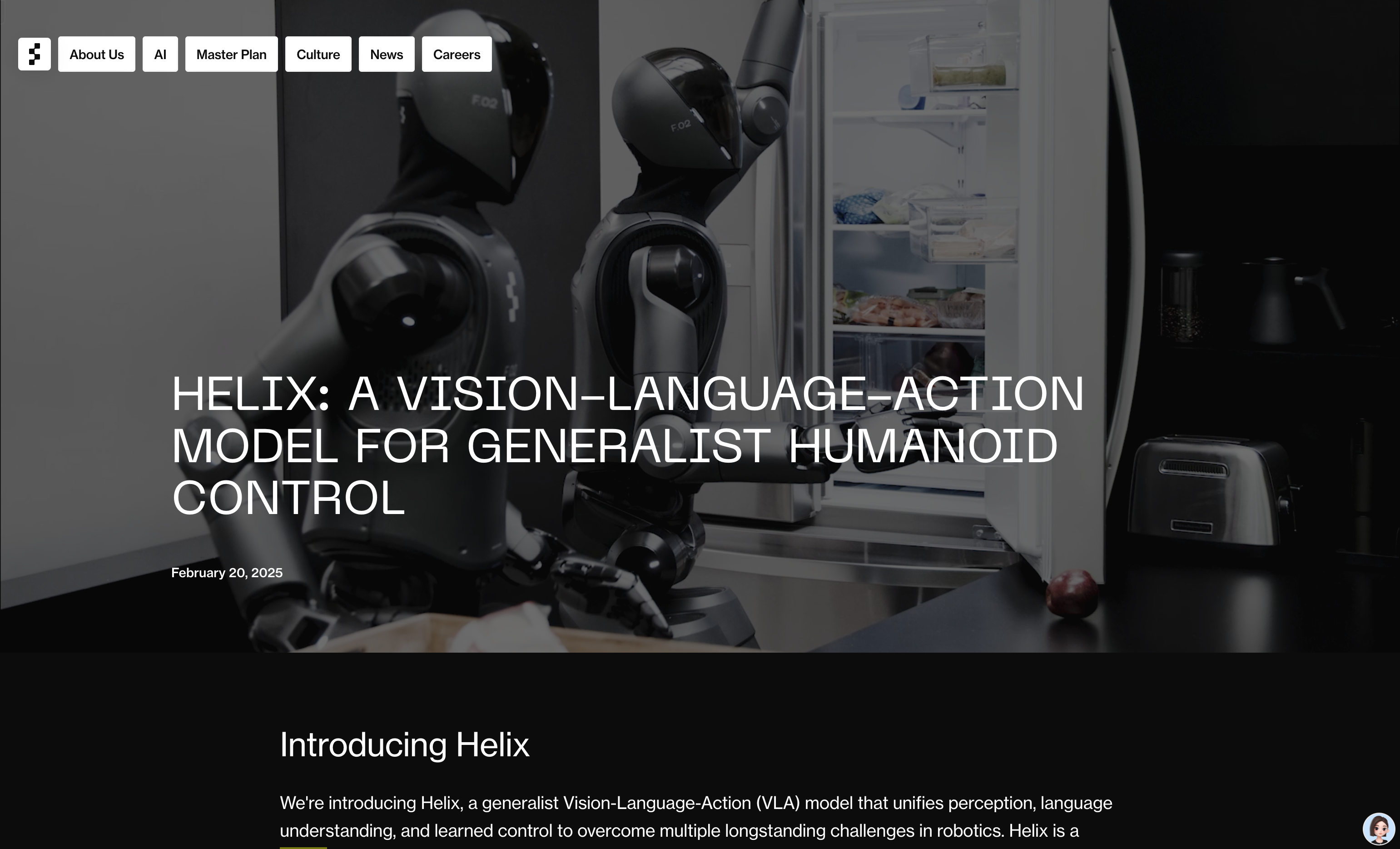

Figure AI Helix
Overview :
Helix is an innovative vision-language-action model designed for general-purpose control of humanoid robots. It addresses several long-standing challenges in robotic manipulation in complex environments by combining visual perception, language understanding, and action control. Key advantages of Helix include strong generalization capabilities, efficient data utilization, and a single neural network architecture that eliminates the need for task-specific fine-tuning. The model aims to provide robots in home environments with on-the-fly behavior generation capabilities, enabling them to handle unseen objects. The emergence of Helix marks a significant step forward in robotics' ability to adapt to everyday life scenarios.
Target Users :
Helix is designed for robotic applications requiring diverse task execution in complex environments, particularly in the domain of home service robots. It enables rapid behavior generation from natural language instructions, adapting to unseen objects and scenarios, significantly enhancing robot usability and flexibility. Therefore, Helix is especially well-suited for businesses and research institutions seeking to deploy general-purpose robots in home environments.
Use Cases
Two robots collaboratively complete an unseen grocery organization task using Helix.
A robot successfully identifies and grasps a toy cactus after receiving the natural language instruction 'Pick up the desert item'.
A robot grasps various small household items, such as glassware, toys, and tools, in complex environments.
Features
Full Upper Body Control: Achieves, for the first time, high-speed continuous control of the entire upper body of a humanoid robot, including wrists, torso, head, and fingers.
Multi-Robot Collaboration: Enables, for the first time, two robots to simultaneously use the same model weights to collaboratively complete shared tasks.
Arbitrary Object Grasping: The robot can grasp virtually any small household item via natural language instructions, without prior demonstration or programming.
Single Neural Network: Learns all behaviors using a single neural network weight, eliminating the need for task-specific fine-tuning.
Commercially Ready: Helix can run on low-power embedded GPUs, making it suitable for commercial deployment.
How to Use
1. Prepare the robotic equipment and ensure it is equipped with a low-power embedded GPU to run the Helix model.
2. Deploy the Helix model to the robot system and load the pre-trained neural network weights.
3. Issue task instructions to the robot using natural language commands (e.g., 'pick up the red cup').
4. Observe how the robot generates corresponding behavior through visual perception and language understanding.
5. The robot executes the task, adjusting its actions in real-time to adapt to environmental changes.
Featured AI Tools

Gemini
Gemini is the latest generation of AI system developed by Google DeepMind. It excels in multimodal reasoning, enabling seamless interaction between text, images, videos, audio, and code. Gemini surpasses previous models in language understanding, reasoning, mathematics, programming, and other fields, becoming one of the most powerful AI systems to date. It comes in three different scales to meet various needs from edge computing to cloud computing. Gemini can be widely applied in creative design, writing assistance, question answering, code generation, and more.
AI Model
11.4M
Chinese Picks

Liblibai
LiblibAI is a leading Chinese AI creative platform offering powerful AI creative tools to help creators bring their imagination to life. The platform provides a vast library of free AI creative models, allowing users to search and utilize these models for image, text, and audio creations. Users can also train their own AI models on the platform. Focused on the diverse needs of creators, LiblibAI is committed to creating inclusive conditions and serving the creative industry, ensuring that everyone can enjoy the joy of creation.
AI Model
6.9M













